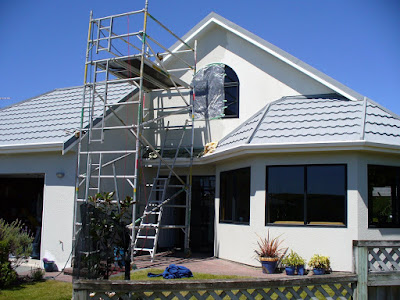Changes in the art of wood-finishing has come about through the rapid progress in the development of quick-drying, very permanent, nitrocellulose lacquers which are new finishes derived from the realm of magic and mystery.
Present-day lacquers contain varnish-gums in addition to nitrocellulose, and dry so quickly that they are practically dust-proof; yet they set slowly enough so that they can be applied with little training by use of either a brush or a spray-gun.
The student wood-finisher in the school, the arts and crafts painter in the home who wishes to refinish old furniture, door toppers, or woodwork, and the professional painter will all find new and helpful hints and much practical information about lacquer and its use.
While it is true that the emphasis has been placed on new materials and processes, mention should be made of the fact that the entire field of wood-finishing, including wood-filling, shellacking, and enameling has changed.
Many microscopic studies have been made of the reaction of various finishes, especially wood-fillers, in the pores of several kinds of wood. Many technical difficulties were encountered in attempts to prepare photomicrographs of wood filler in the pores of wood, but nevertheless some interesting information was secured.
Some new and very valuable paint-pigments, such as lithophone, titanox, and "extenders," such as asbestine, are now used rather extensively in the paint trade since they were developed. For many purposes these new materials can be used to advantage. The person who applies paint at the present time has a wide field to choose from in selecting pigments, extenders, colors, drying-oils, and thinners, and needs information about these materials.
Another very fundamental characteristic of wood-finishing is that it is treated as a science as well as an art. It is for this reason that a rich background of related science is given in connection with the descriptions of the materials and the methods of using them.
The chemical formulas of the substances described are usually given, and some of the chemical and physical reactions of the materials are pointed out for the benefit of the amateur, the apprentice, or the master painter who may lack a thorough scientific background for his trade.
Experts gather information about wood finishing with meticulous care through visits to some of the best paint, varnish, and lacquer factories in the United States in order to obtain up-to-date, reliable information. A very careful study has also been made of the writings of scientists on this subject, on everything from finishing wooden bar rails to wood fireplace inserts.
In the industrial-arts departments of schools, wood-finishing and painting have often been taught in connection with woodworking, but at present there is a strong tendency toward the establishment of separate courses in which the informational aspect of wood-finishing and painting can receive proper attention.
The industrial-arts departments of 30 years ago gave little attention to wood-finishing, and attempts were made to finish articles in dusty woodworking shops; now separate rooms, after the universal practice of industry, will be found in all schools where serious work in wood-finishing is done.



















































